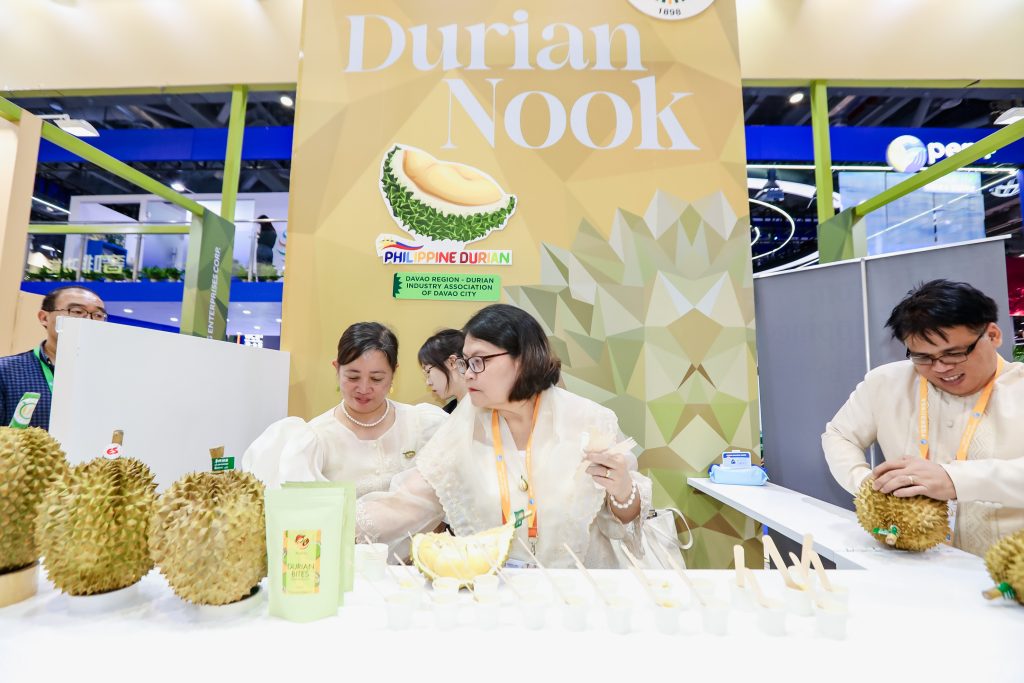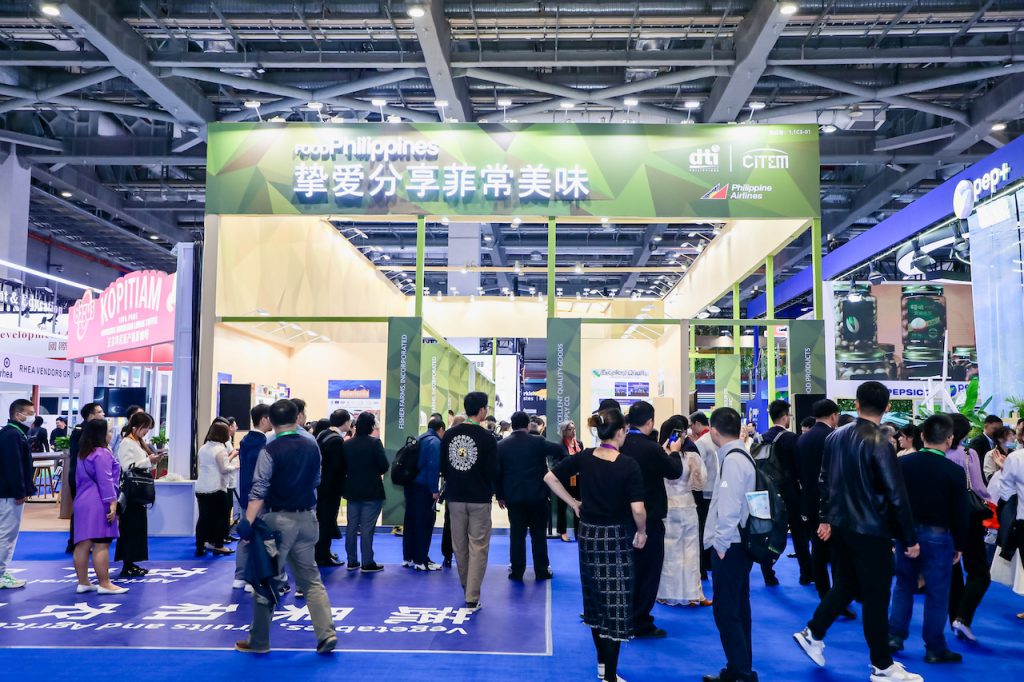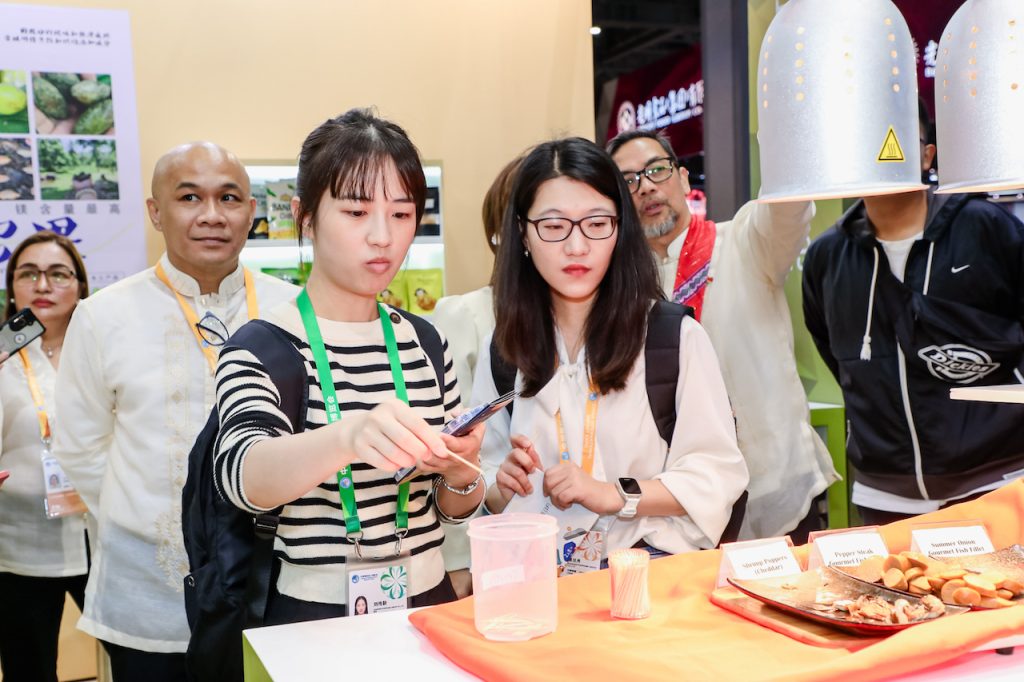
(The Department of Agriculture and Durian Industry Association of Davao City representatives brought the fine-tasting “Puyat” at the Philippine pavilion for international trade buyers and Chinese consumers to experience.)
Thousands of visitors flocked to the Philippine pavilion at the 6th China International Import Expo to grab a bite of its fine-tasting local Durian variety popularly known as the golden “Puyat.”
Chinese consumers who have tasted the same have likened the homegrown Durian to Malaysia’s own variety, “Musang King” which is currently the most expensive Durian in the Chinese market.
The Philippines successfully started durian exports to China in April this year. In just a few months of market access, China has become the major export destination for fresh Durian at about 3,481.29 metric tons out of the total 3,916.36 metric tons exported to the world from January-October 2023.
This year, the focus on durians at the CIIE is celebrated and supported, especially for hundreds of small farmers who will benefit from these exports. This signals a promising future for the Philippines’ local agricultural communities as it is also expected to generate at least 10,000 direct and indirect jobs.

Sharing what sets “Puyat” apart from other Durian varieties sourced from China’s neighboring countries, Durian Industry Association of Davao City (DIADC) President Emmanuel Belviz said the strategic location where “Puyat” was grown is one of the factors that makes it special.
“Our unique fruits are grown around the majestic foothills of Mt. Apo, the tallest mountain in the Philippines, situated in the beautiful region of Mindanao. The rich volcanic soil and distinct weather conditions provide for the creamy texture and custard flavor of our homegrown Durian,” Belviz explained.
“This delightful fruit is a seedling fusion of varieties from Thailand and the Philippines. It boasts a pear shape, browner husk, and flesh with a more vibrant gold-yellow color, making it distinct from Chanee D15 variety,” he added.
Agriculture Counselor Ana GM B. Abejuela of the DA-OAC in Beijing attributed the increasing popularity “Puyat” has been enjoying to its marketability.
“Chinese consumers already love the Durian. The introduction of one from a new source naturally aroused their curiosity as to the taste and, of course, the price,” Abejuela said.
Aside from fresh Durian, the country pavilion housed an array of delectable fresh produce along with an innovative lineup of processed food products like the coco aminos and syrup from the coconut flower/sap. A diverse selection of fine-tasting agricultural produce included mango, coffee, coconut, and other related products. Likewise, fun and healthy snacks were featured such as banana chips, dried mangoes, desiccated coconut products, milkfish, and shrimp products, among others.

Underscoring the fourth day of the trade show, the China Chamber of Commerce of I/E of Foodstuff, Native Produce and Animal By-products (CFNA) formally launched its Big Data Report on International Trade of Philippine Food and Agriculture Products at the Philippine Pavilion.
As early as now, the Center for International Trade Expositions and Missions (CITEM) is gearing up for the continued expansion of the Philippine participation in the annual Chinese expo.
CITEM OIC-Project Manager Rowena Mendoza noted, “The Philippines’ 8th participation in CIIE 2025 coincides with the commemoration of the 50th anniversary of the Philippines-China Diplomatic Relations. That’s the reason why next year, we will somehow present a preview of what will be the grand presentation in 2025.”


